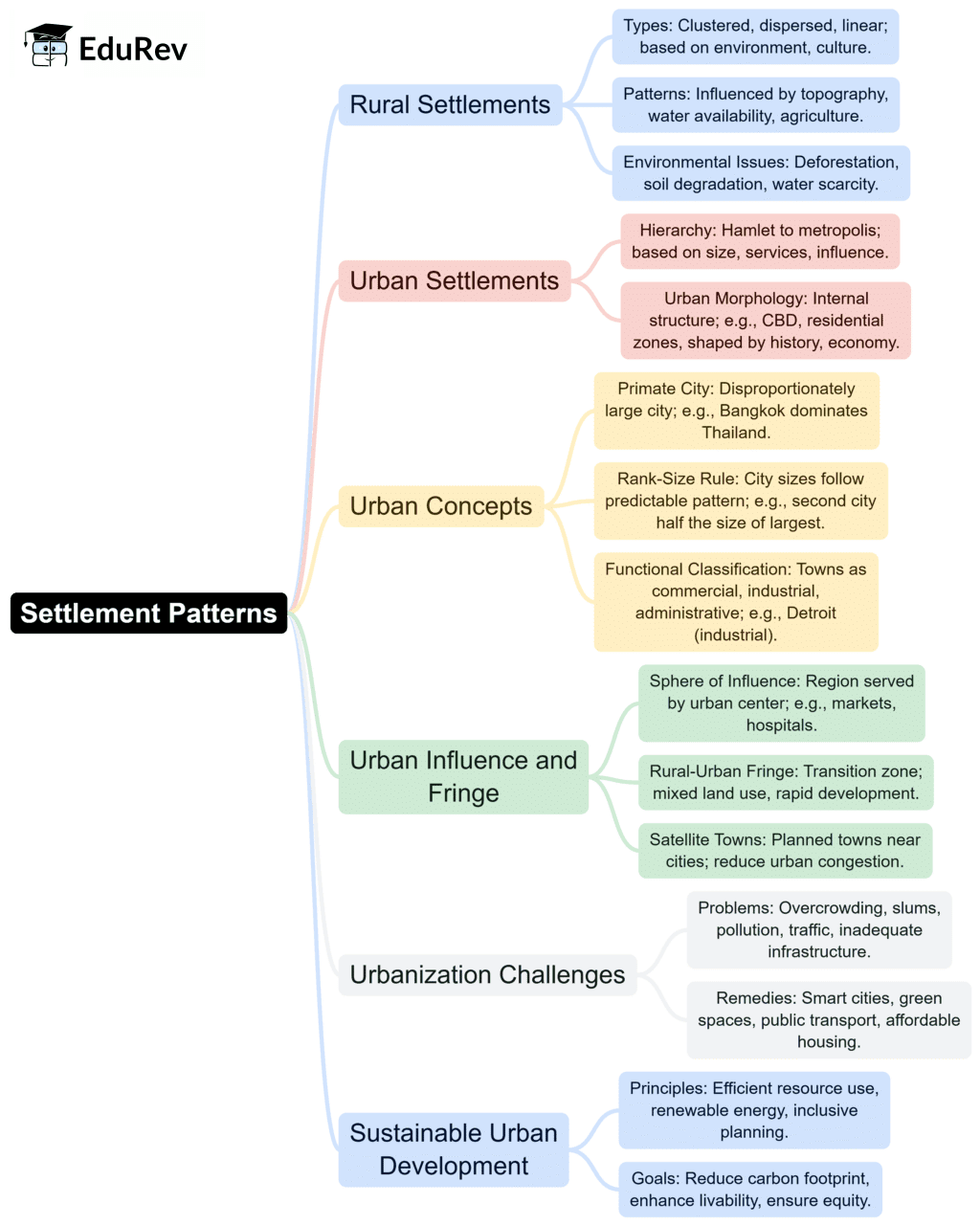UPSC Exam > UPSC Notes > Geography Optional for UPSC > Mind Map : Population and Settlement Geography-2
Mind Map : Population and Settlement Geography-2 | Geography Optional for UPSC PDF Download

The document Mind Map : Population and Settlement Geography-2 | Geography Optional for UPSC is a part of the UPSC Course Geography Optional for UPSC.
All you need of UPSC at this link: UPSC
|
303 videos|635 docs|252 tests
|
FAQs on Mind Map : Population and Settlement Geography-2 - Geography Optional for UPSC
| 1. What are the key factors influencing population distribution in geography? |  |
Ans. The key factors influencing population distribution include physical factors such as climate, topography, and natural resources; economic factors like job availability and infrastructure; social factors including culture and education; and political factors such as government policies and stability. These elements interact to shape where populations settle and grow.
| 2. How does settlement geography differ between rural and urban areas? |  |
Ans. Settlement geography in rural areas is characterized by low population density, agricultural land use, and a reliance on natural resources. In contrast, urban areas exhibit high population density, diverse economic activities, advanced infrastructure, and social services. Urban settlements often have complex layouts with residential, commercial, and industrial zones, while rural settlements are more dispersed.
| 3. What role does migration play in shaping population trends? |  |
Ans. Migration significantly impacts population trends by altering the size and composition of populations in specific areas. It can be driven by factors such as economic opportunities, environmental changes, and social conditions. Migration leads to urbanization, cultural exchange, and sometimes demographic challenges in both sending and receiving regions.
| 4. What are the implications of overpopulation in certain regions? |  |
Ans. Overpopulation can lead to a range of issues, including resource depletion, environmental degradation, increased competition for jobs, inadequate infrastructure, and strain on public services like healthcare and education. It can exacerbate social inequalities and lead to conflicts over resources, necessitating effective population management strategies.
| 5. How do government policies affect population and settlement patterns? |  |
Ans. Government policies play a crucial role in shaping population and settlement patterns through zoning laws, urban planning, immigration regulations, and economic incentives. Policies can promote balanced regional development, manage urban sprawl, encourage rural development, and influence migration flows, ultimately affecting how populations distribute and settle across different areas.
Related Searches
















